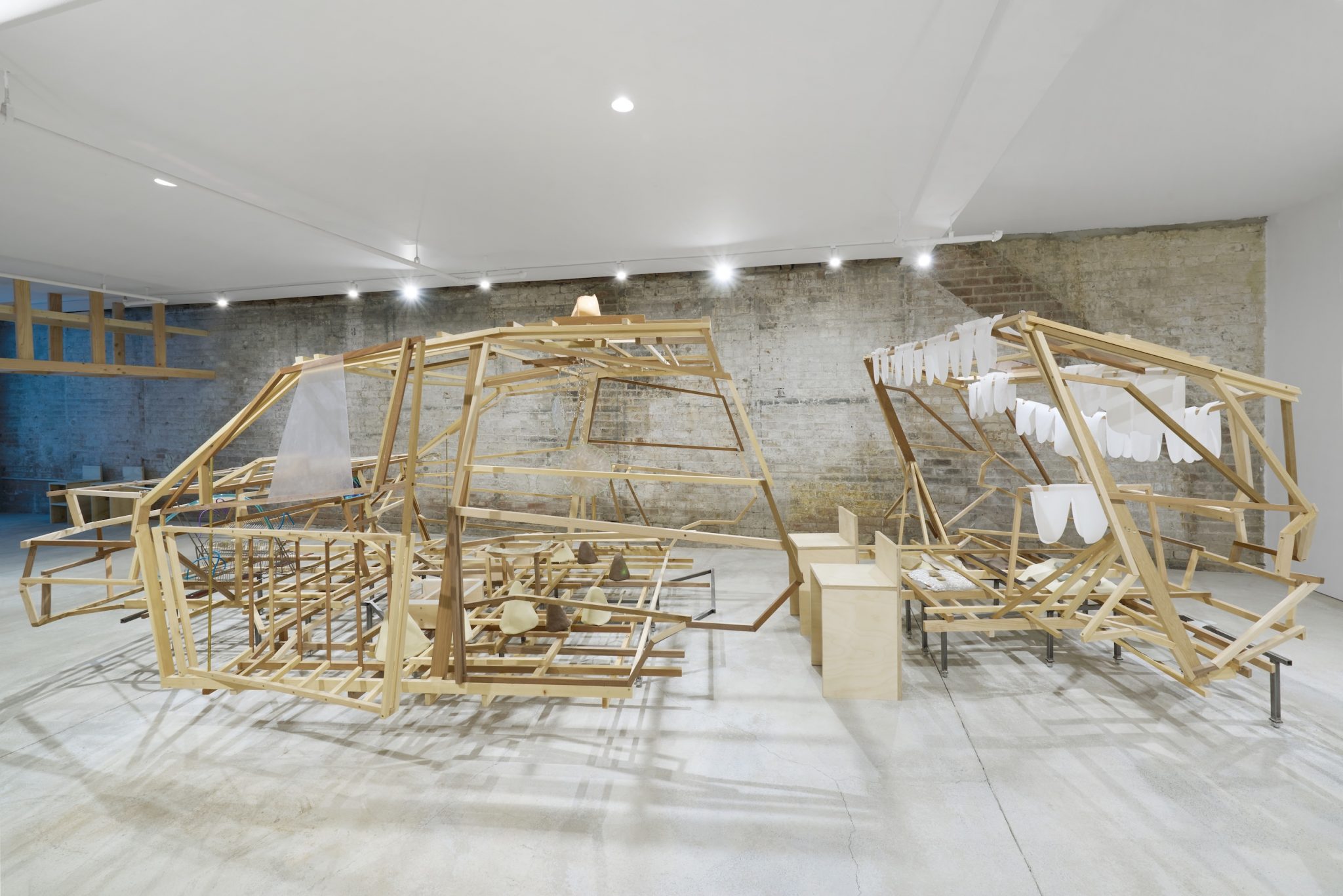In Niro at Canal Projects, the former car of the artist’s late father becomes a ‘psychological prosthetic’ for their burdened relationship
When the French philosopher Jean Baudrillard visited the United States in the 1980s, he was both alarmed and mesmerised by the cars that crammed the freeways of Los Angeles: ‘All you need to know about American society can be gleaned from an anthropology of its driving behaviour,’ he declared in his book America (1986). The automobile is central to American life, of course, understood as a practical necessity in a vast country with poor public transit systems, and consequently functioning as a symbol of freedom and mobility. Perhaps with this in mind, New York-based artist Hyeree Ro makes the car the focal point of Niro (2024), using it to unravel a deeply personal narrative.
In a gallery about the size of a carport sits the skeleton of a Kia Niro, the car model driven by the artist’s late father, from whom she was estranged for 13 years. The intricate structure is made of wood and aluminium and attached to a metal base on ball castors. Placed precariously inside the scaffolding of Niro (2024) is an assortment of smaller sculptures and objects, such as stones, shells and cone-shaped mounds of clay, which are initially difficult to make out within all the intersecting beams. Wispy pieces of white paper hang limply from some of the beams like laundry, lending a skinlike quality, and a delicate touch to an otherwise rigid armature. Projected onto the gallery’s back wall is a video of various bodies of water – waterfalls, ocean waves – that includes audio recordings of interviews Ro conducted with friends about their experiences of crossing the Pacific Ocean (the artist herself grew up between Seoul and LA). Alongside this is another soundscape of the artist’s reflections recorded during a 14-hour road trip to Niagara Falls this summer.
Roughly scaled to a Kia Niro’s actual proportions, Niro looks more like a raft than an automobile, devoid of polish and pretension. It looks to have been constructed in segments and indeed can be easily disassembled thanks to a series of metal latches, as the artist demonstrated during a series of performances than ran alongside the show. During the first of these, Ro painstakingly moved the wooden car and its accompanying objects around the gallery – sometimes sundered in thirds, sometimes intact – while she narrated the aftermath of her father’s unexpected passing. Oscillating between clipped English and Korean words and phrases, Ro’s splintered monologue rehashed previous conversations with her father, as well as her phone calls with various administrators to close his bank accounts, clear his apartment and retrieve his Niro. The screeches made by the metal castors as the structure was moved around by Ro added to the overriding impression of the difficulty of it all – of the unwillingness of the sculpture to be moved, and, by extension, of Ro’s burdened relationship with her father.
Once activated through such a performance, though, Niro becomes autonomous, with the sculpture disregarding the viewer, who must scurry out of its way. Cars, like any technology, can serve a prosthetic purpose, by compensating for the natural limitations of the human body. In the case of Niro, the car also functions as a sort of psychological prosthetics, a site for some of the artist’s most meaningful experiences with her father and thus a temporary substitution of a home they never shared. As an intensely private and enclosed space that is situated in the impersonal, public realm, the car here analogises the dynamics of closeness and distance between Ro and her father, reincarnating these dynamics as gestures, as force, as hiccuped movement.
Niro at Canal Projects, New York, through 7 December
